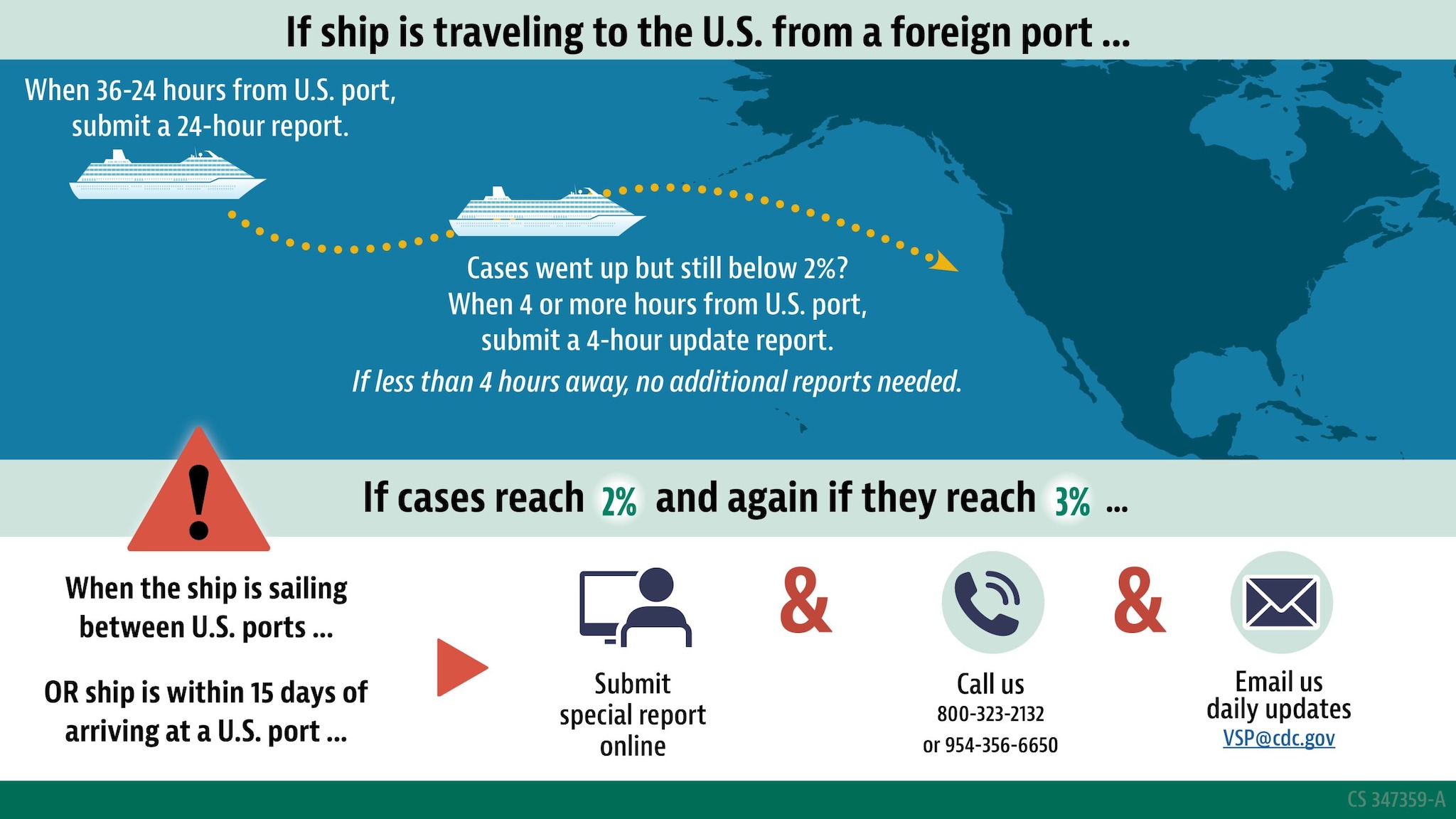At a glance
We track cases of acute gastroenteritis (AGE) on cruise ships under our jurisdiction. AGE is a type of gastrointestinal (GI) illness. Common symptoms include diarrhea, muscle ache, headache, abdominal pain, and fever.

How it works
Our surveillance system tracks cases of acute gastroenteritis (AGE) on cruise ships under our jurisdiction. We monitor the system to detect illness patterns and help the cruise industry prevent and address cases and outbreaks.
- Cruise ships are required to log and report to VSP the number of passengers and crew members that say they have symptoms of gastrointestinal illness. Ships are also required to keep a list of all passengers and crew members that have received or been issued antidiarrheal medication.
- Passengers and crew tell ship medical staff they are sick. If it is a reportable case of gastrointestinal illness, it is entered in the log.
- Medical staff send a report to VSP that shows the total number of gastrointestinal illness cases for both passengers and crew.
AGE cases
We define a reportable case of AGE as three or more loose stools within a 24-hour period or what is more than normal for that person, OR vomiting along with one of the following symptoms:
- Diarrhea
- Muscle ache
- Headache
- Abdominal cramp
- Fever
AGE is more commonly known as GI illness. It is highly contagious and can be caused by viruses, including norovirus, or by bacteria or parasites. Other common causes of AGE include Escherichia coli and Salmonella.
Reporting timeline
Cruise ship medical staff are required to send gastrointestinal illness case reports to VSP at specific times. Read our one-page infographic to learn more.

How we use reported information
We monitor and evaluate reports of AGE aboard ships to:
- Determine if a high number of people are sick.
- Find out if unusual cases occur.
- Provide support to the cruise line and cruise ship crew as they respond to an increase in cases.
- Analyze illness patterns over time.
We provide support and technical assistance to cruise ships when:
- The number of ill passengers or crew members reaches 2% or more of the total number of passengers or crew members
- An unusual AGE pattern or characteristic is found
When the number of ill passengers or crew members reaches 3% or more of the total number of passengers or crew members, we consider it an outbreak. Learn what we do in outbreaks.
